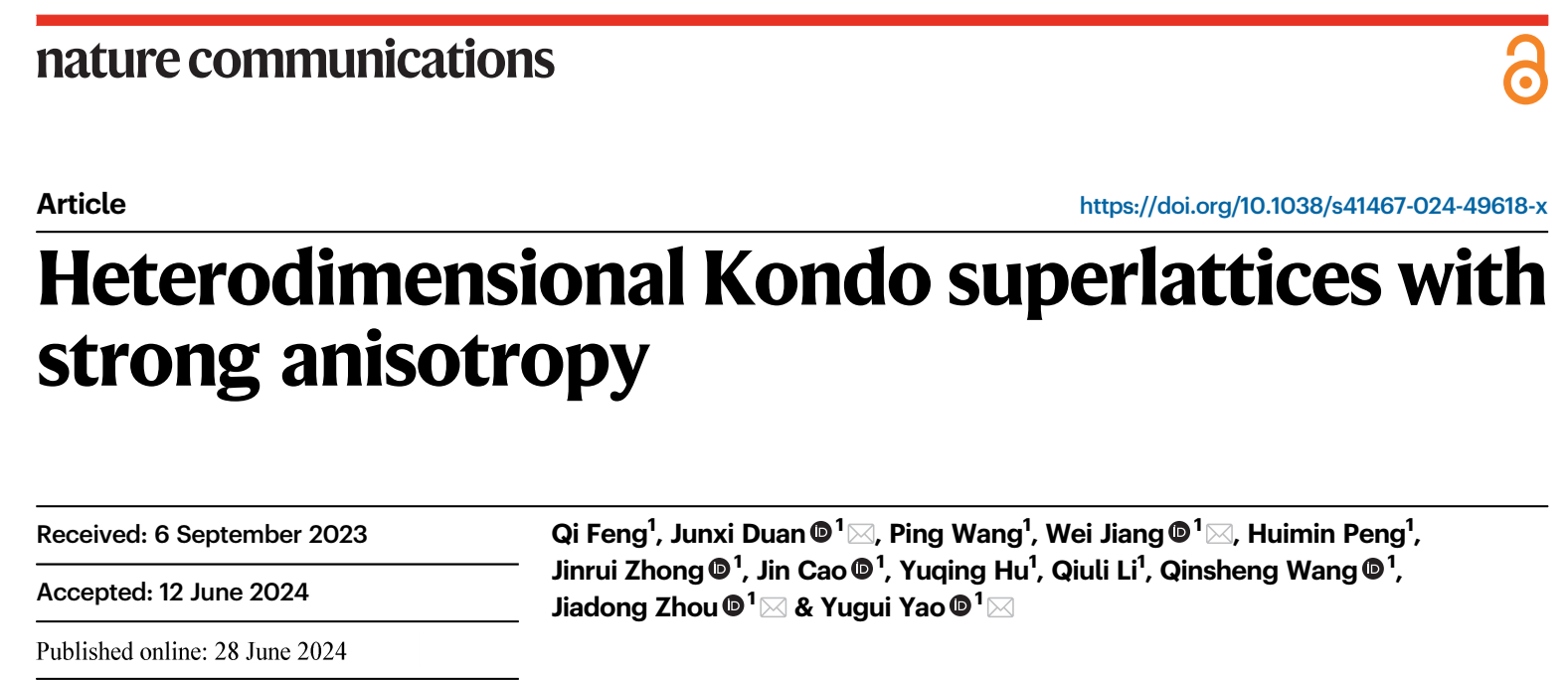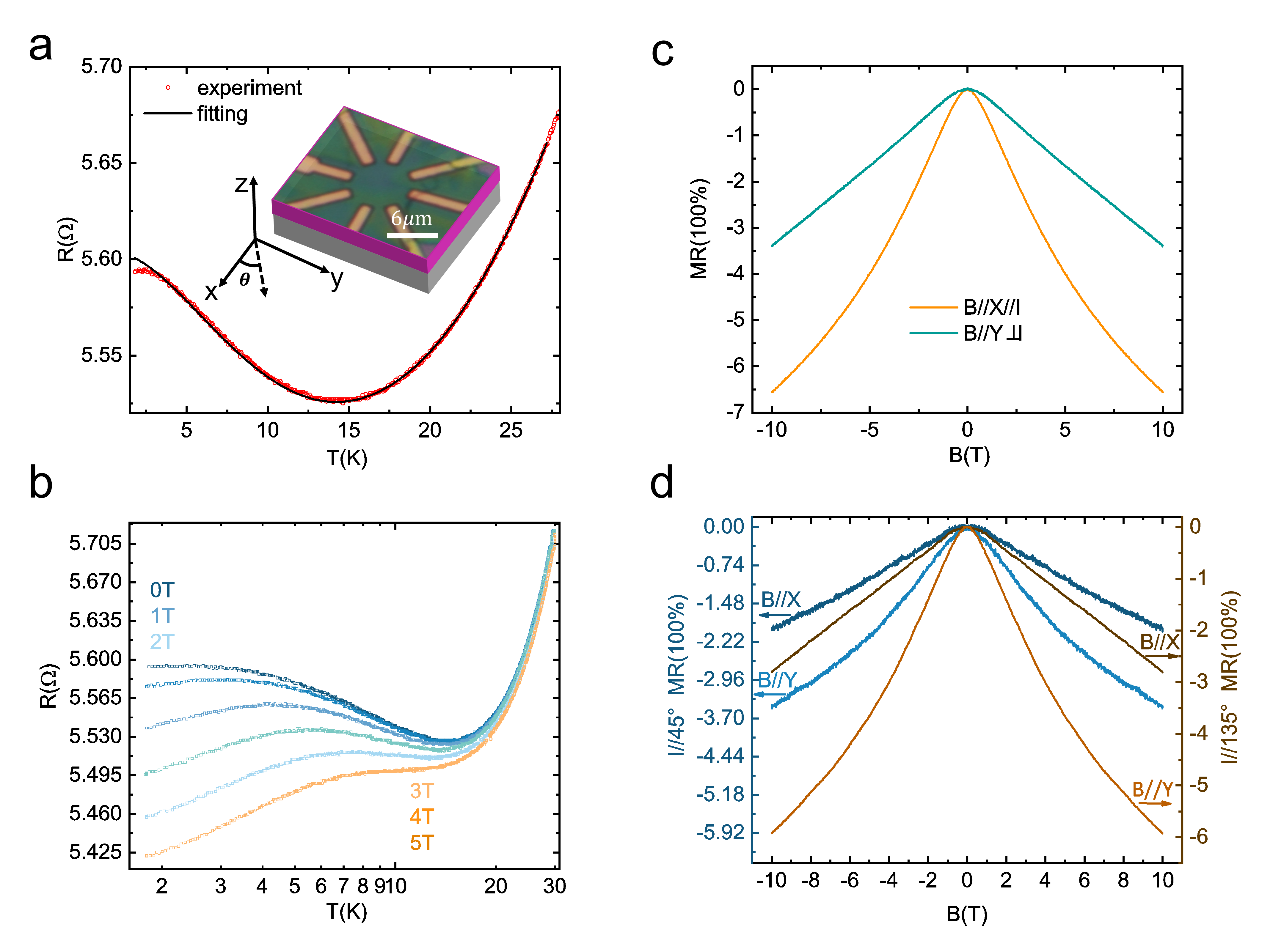Heterodimensional Kondo superlattices with strong anisotropy
来源: 作者: 发布时间:2024-07-09
Recently, Junxi Duan and Yugui Yao's team in School of Physics, Beijing Institute of Technology (BIT), has experimentally demonstrated the heterodimensional Kondo superlattice for the first time, opening new avenues for exploring correlated physics. The finding has been published in Nature Communications.
In non-magnetic metals, the resistance usually decreases as the temperature decreases because of the weakening of the lattice vibrations. However, when magnetic atoms are added, the resistance increases as the temperature is lowered below certain value. This anomalous behavior is known as the Kondo effect. The understanding of this famous Kondo effect reveals the importance of the interactions between the localized magnetic moment and the itinerant conduction electrons. Such a many-body interaction develops a variety of intriguing electronic properties in materials, for instance the heavy fermion and unconventional superconductivity, which have always been the hotspots in condensed matter physics.
In most Kondo systems, the localized magnetic moments are introduced through magnetic impurities and defects. However, the intrinsic magnetic properties of materials can also be effectively modulated by the dimensionality. The recent report of the synthesis of the heterodimensional superlattice opens a new pathway to construct Kondo systems [Nature 609, 46–51 (2022)]. Different from the conventional superlattice consisting of cells with the same dimension, the heterodimensional superlattice composes components with different dimensions. Such a unique crystalline symmetry provides a new degree of freedom, the dimensionality, to manipulate the magnetic and charge properties in a heterodimensional superlattice, which can be called a heterodimensional Kondo superlattice (HKSL).
The Junxi Duan and Yugui Yao's team in BIT has been steadfastly committed to investigating the transport properties of novel topological and quantum materials. To realize the heterodimensional Kondo superlattice, the research team used VS2-VS heterodimensional superlattice as the representative system, which was first synthesized by Jiadong Zhou [Nature 609, 46–51 (2022)]. In the study, the team discovered: (1) The VS2-VS heterodimensional superlattice exhibited the low-temperature resistance upturn and the negative magnetoresistance (NMR), which are typical characteristics of the Kondo effect. Interestingly, the dependence of these two phenomena on the magnetic field showed strong anisotropy, as illustrated in Figure 1. (2) With a circular disc device, the anisotropic NMR is determined to originate from the anisotropic splitting of the Kondo resonance induced by magnetic anisotropy, as shown in Figure 2. (3) By extracting the Landé factor and Curie temperature, and combining with the first-principles calculations, the unique anisotropy Kondo effect is determined to originate from the magnetic anisotropy which has the root in the unique 1D chains in the structure, as depicted in Figure 3.

Figure 1. The Kondo effect in Hall bar device N1

Figure 2. The Kondo effect in disc device N2

Figure 3. Magnetic anisotropy
The study is done in Beijing Institute of Technology. Junxi Duan, Yugui Yao, Wei Jiang, and Jiadong Zhou are the corresponding authors. Qi Feng, a PhD candidate from the School of Physics, is the first author. This research was supported by the National Key R&D Program of China, the National Natural Science Foundation of China, the Beijing Natural Science Foundation, the Strategic Priority Research Program of Chinese Academy of Sciences, the funding Program of BIT and Micro-nano fabrication center of Beijing Institute of Technology.
Qi Feng, Junxi Duan*, Ping Wang, Wei Jiang*, Huimin Peng, Jinrui Zhong, Jin Cao, Yuqing Hu, Qiuli Li, Qinsheng Wang, Jiadong Zhou* & Yugui Yao*, “Heterodimensional Kondo superlattices with strong anisotropy”, Nat Commun. 15, 5491 (2024) (*the corresponding authors)




